Can anybody tell me whats wrong with my basil?
Here are some pictures of my basil, It seems to have some spots and also I believe insect damage. I just treated it not too long ago with liquid copper soap but what about for the insect problem? Thanks everyone.
- rainbowgardener
- Super Green Thumb
- Posts: 25279
- Joined: Sun Feb 15, 2009 6:04 pm
- Location: TN/GA 7b
- applestar
- Mod
- Posts: 30882
- Joined: Thu May 01, 2008 7:21 pm
- Location: Zone 6, NJ (3/M)4/E ~ 10/M(11/B)
They like to hide underneath or in gap between wall and soil of things like that. They climb trees so 8" is nothing to them.
Don't underestimate snails and slugs. They are evil
Some caterpillars and beetles feed on them, too. If you don't see the culprit during the day, then most likely, they are night feeders. It's worth your while to go out with a flashlight and check.
Don't underestimate snails and slugs. They are evil
Some caterpillars and beetles feed on them, too. If you don't see the culprit during the day, then most likely, they are night feeders. It's worth your while to go out with a flashlight and check.
- rainbowgardener
- Super Green Thumb
- Posts: 25279
- Joined: Sun Feb 15, 2009 6:04 pm
- Location: TN/GA 7b
-
Animal_lover
- Full Member
- Posts: 19
- Joined: Wed Jul 05, 2017 5:32 am
- Location: Placerville, CA
- rainbowgardener
- Super Green Thumb
- Posts: 25279
- Joined: Sun Feb 15, 2009 6:04 pm
- Location: TN/GA 7b
I can't say it isn't possible, but slug damage has a very typical look- large, round to oval holes in the middles of leaves:
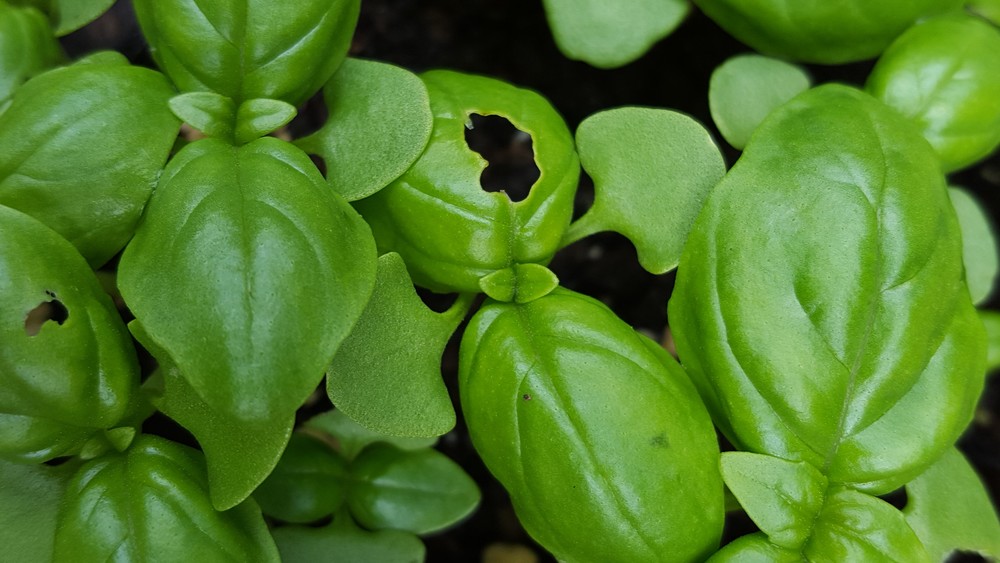

If it progresses unchecked, eventually the leaves will be skeletonized:
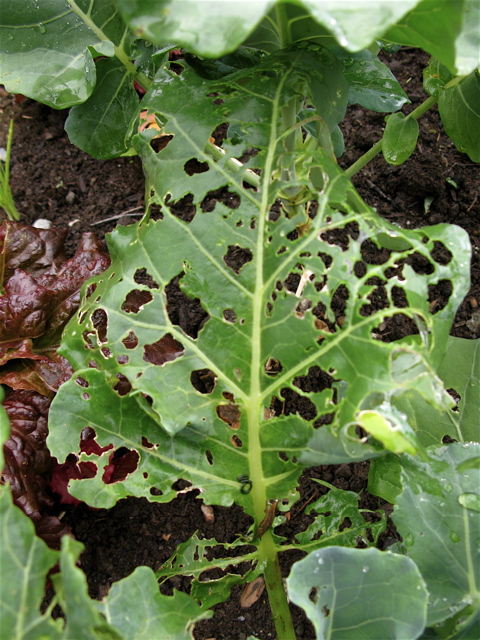
And since the slugs/snails are mainly out late at night, it is not uncommon for any slime trails to have dried up and be invisible by the time we see the holes. If you want to check my theory, come out around midnight with a flashlight and look!
What insect damage looks like depends on the insect. Earwig damage, if you have an infestation of them, can look kind of similar, but there will also be leaves that are chewed on the edges or eaten in half. You have to look closely at this picture to see that:
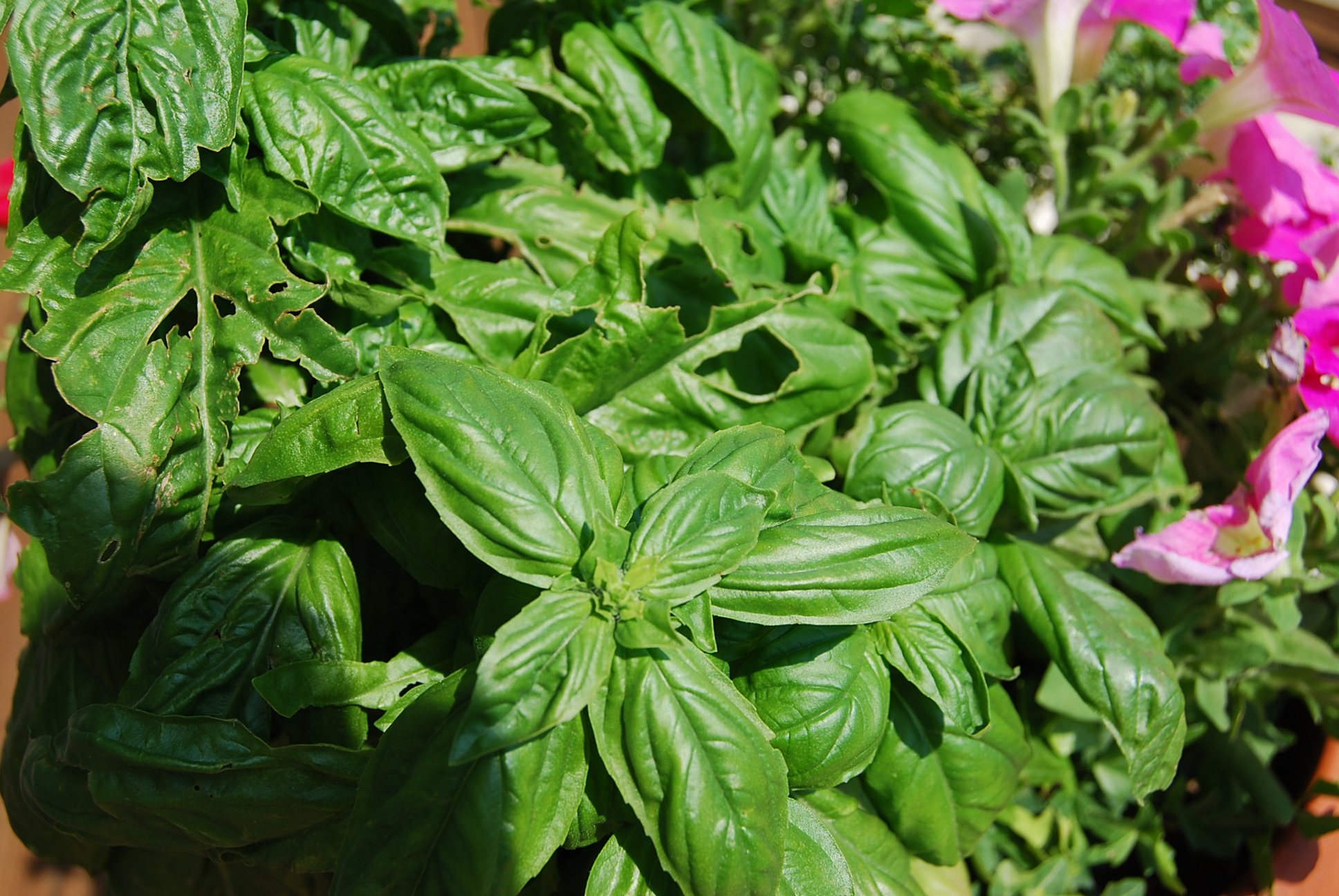
Japanese beetles (and other kinds) can also make large holes, but they will be even larger and at least some of the holes will be other shapes, elongated etc.

Four lined plant bugs make dark circles clustered near the base of the stem:
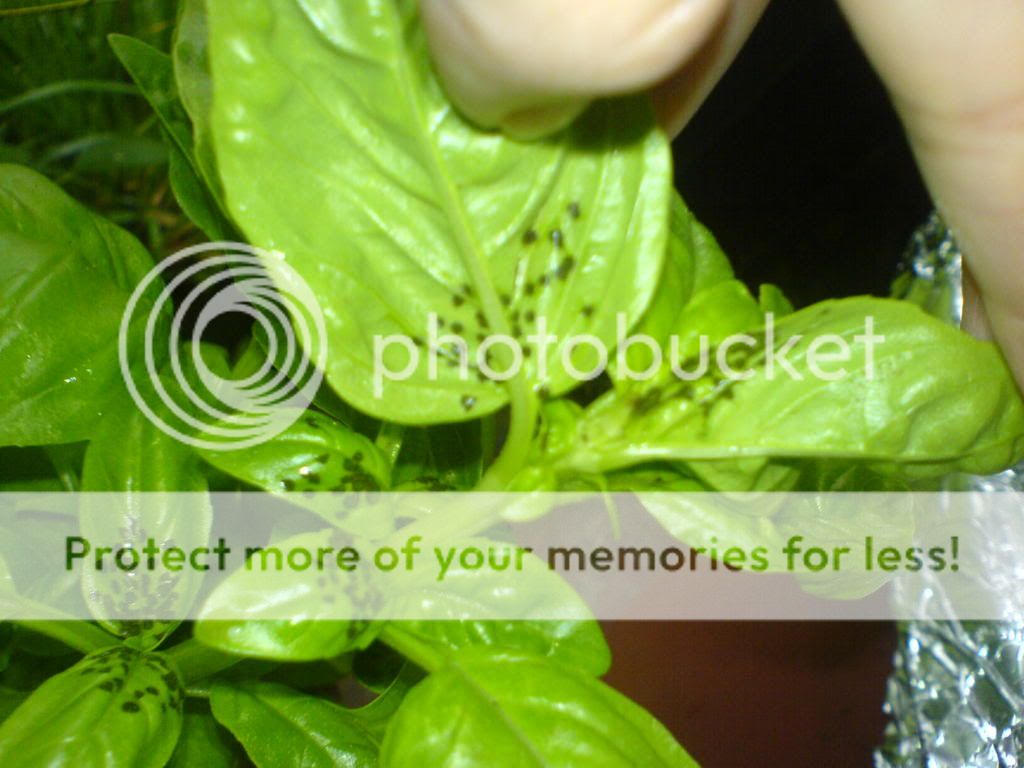
aphids and other sucking insects don't make holes, they just leave scars that discolor. Eventually the leaf starts curling/ crinkling:
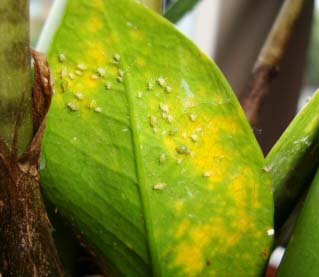
Sorry, but I think it is fascinating that you can frequently identify what your pest is by the damage it leaves, without ever seeing the pest. I've done some study of it.


If it progresses unchecked, eventually the leaves will be skeletonized:

And since the slugs/snails are mainly out late at night, it is not uncommon for any slime trails to have dried up and be invisible by the time we see the holes. If you want to check my theory, come out around midnight with a flashlight and look!
What insect damage looks like depends on the insect. Earwig damage, if you have an infestation of them, can look kind of similar, but there will also be leaves that are chewed on the edges or eaten in half. You have to look closely at this picture to see that:

Japanese beetles (and other kinds) can also make large holes, but they will be even larger and at least some of the holes will be other shapes, elongated etc.

Four lined plant bugs make dark circles clustered near the base of the stem:

aphids and other sucking insects don't make holes, they just leave scars that discolor. Eventually the leaf starts curling/ crinkling:

Sorry, but I think it is fascinating that you can frequently identify what your pest is by the damage it leaves, without ever seeing the pest. I've done some study of it.
-
Animal_lover
- Full Member
- Posts: 19
- Joined: Wed Jul 05, 2017 5:32 am
- Location: Placerville, CA
Since my Basil was grown next to my tomato plants - when the toms got attacked with pests, they all got treated. What I had a bad time with this year was tomato blight - and it dawned on me at a point that a lot of white flies were responsible for spreading the blight fungus around.
So what I did was get a generic insecticide, and mix it into a sprayer that I had pre-filled with about a 40/60 mix of rubbing alcohol and water. The rubbing alcohol mix all by itself can instantly kill off such bugs, and it does no harm to the plants - evaporating fairly quick. Three gallons of that spray (water/alky) cost me about four bucks to make, but it was more than enough for two sprayings of a sixteen foot long row of tall plants a few days apart...
(It also cleaned the pump sprayer)
In a flash, all of the pests were dead and gone.
This half and half mix of water and alcohol is a trick I found while trying to find a way to get rid of persistent spider mites. It is a sure kill that leaves no toxic residue, and is not banned anywhere. you can get rubbing alcohol at just about any store. Though some stores are less expensive than others. As a rule, more than a dollar and a half a quart for isopropyl is overpricing.
So what I did was get a generic insecticide, and mix it into a sprayer that I had pre-filled with about a 40/60 mix of rubbing alcohol and water. The rubbing alcohol mix all by itself can instantly kill off such bugs, and it does no harm to the plants - evaporating fairly quick. Three gallons of that spray (water/alky) cost me about four bucks to make, but it was more than enough for two sprayings of a sixteen foot long row of tall plants a few days apart...
(It also cleaned the pump sprayer)
In a flash, all of the pests were dead and gone.
This half and half mix of water and alcohol is a trick I found while trying to find a way to get rid of persistent spider mites. It is a sure kill that leaves no toxic residue, and is not banned anywhere. you can get rubbing alcohol at just about any store. Though some stores are less expensive than others. As a rule, more than a dollar and a half a quart for isopropyl is overpricing.
